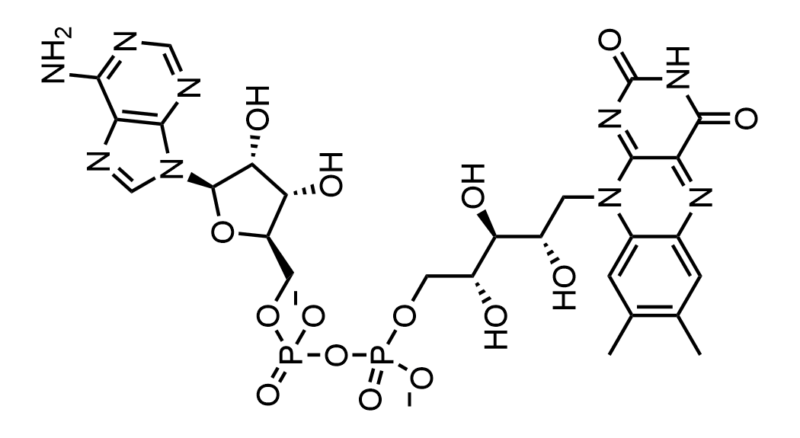Researchers find an enzyme that harvests light to make hydrocarbons
Ars Technica » Scientific Method 2017-08-31

Enlarge / FAD, the key ingredient to making this system work. The bit that absorbs blue light is on the right. (credit: Wikimedia Commons)
It's pretty easy to grow vast quantities of microbes. It's a lot harder to convert those microbes into something useful. For example, we've engineered algae that, when starved for nitrogen, will put most of their stored energy into fats. Fats are chemically similar to hydrocarbons, so this is potentially useful for making biofuel. But "similar" isn't really good enough; you still need to process the fats before they can be used as a fuel.
But some researchers may have figured out a way to get biology to convert fats directly to hydrocarbons using nothing more than sunlight. They've identified an enzyme that catalyzes the conversion of fats to long hydrocarbons, which could be used as fuel with no further modification.
Fat vs. fuel
Gasoline is a mixture of different hydrocarbons, which are molecules that contain only hydrogen and carbon. The simplest hydrocarbons are linear chains, with a backbone of carbon atoms where each carbon is linked to, at most, two others (with two or three hydrogen atoms also linked to each carbon). The chemical processing done in refineries ensures that gasoline mostly contains branched hydrocarbons, wherein some carbon atoms are linked to three or four other carbons.